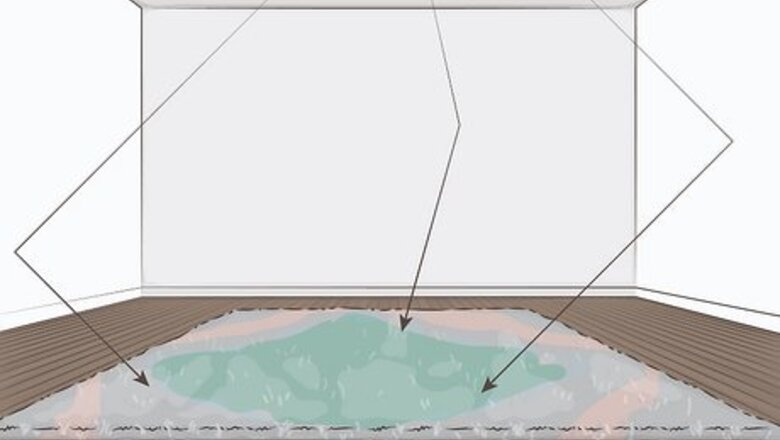
views
- Put large area rugs on the floor to help absorb some of the noise.
- Hang acoustic panels, foam, thick curtains, or canvas wall art on your walls to deflect noise and reduce echoes.
- Move bookcases and soft furniture against your walls. Decorate with blankets and throw pillows for additional echo reduction.
Cover the floor with an area rug.
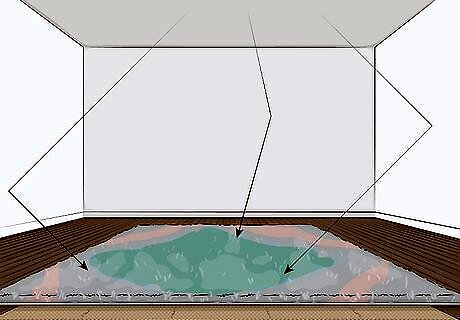
Area rugs stop echoes from bouncing off of hard floors. Hard flooring causes sounds to reverberate back and create echoes. Choose a large area rug that has a thicker pile to help it absorb more of the noise. As a bonus, the rugs also add a nice decorative touch to your room. Try placing foam mats underneath the rugs to help absorb more of the noise.
Apply acoustic panels or foam to your walls.
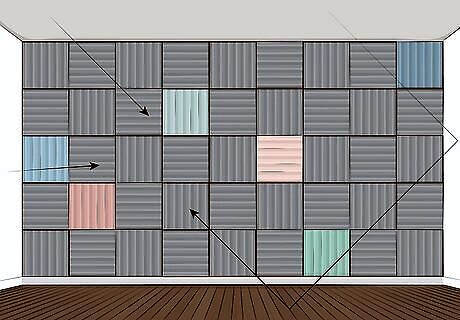
Acoustic panels and foam redirect and absorb echoes in a room. Acoustic panels are usually large fabric or foam squares that attach to your wall. Acoustic panels and foams come in different sizes, shapes, and colors so you can find ones that look great in any room. These panels and foams are lightweight, so they’re really easy to install on your own. If you’re hanging acoustic panels, apply adhesive Velcro strips to the back and press it onto the wall. Alternatively, hang the acoustic panel on your wall with nails. To hang acoustic foam, apply spray adhesive to the wall and press the foam onto it.
Hang thick curtains across walls and windows.
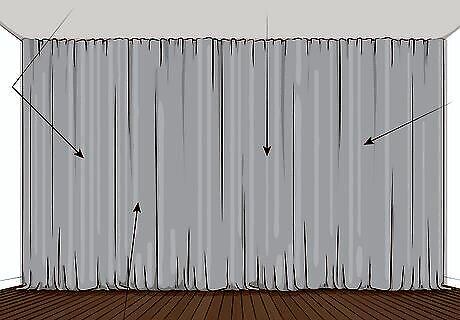
Heavy curtains stop echoes from bouncing off flat walls and windows. Install the curtains across your windows and pull them over the glass to get rid of echoes. If you want to add a decorative touch to your wall, cover the flat surface with a large curtain. No matter where you hang your curtain, choose an accent color or pattern that complements the rest of the room. Alternatively, you may hang up specialty sound blankets that are made to cover your walls and reduce echoes.
Put up wall art and tapestries.
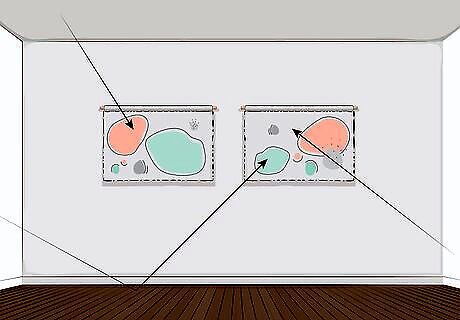
Canvas wall art and textiles stop echoes from forming. If you want a way to decorate and liven up your space, a few new pieces of art or decorative tapestries are the perfect addition to your room. Look at local art stores or interior design stores for large canvases and thick tapestries that match the style and colors you’re already using in the room. To hang your painting, choose where you want to place it and put a sturdy nail or screw into your wall. Then, hang the art on your wall to display it. There are multiple ways to hang a tapestry, but normally you’d put it on a rod similar to the way you would hang curtains. Avoid using art with glass frames because the noise will still bounce off of the flat surface.
Move bookcases against the wall.
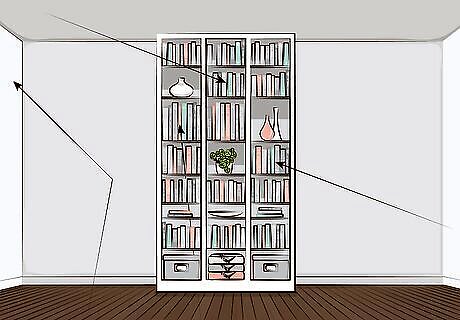
Bookcases against your walls help diffuse the sound. Move bookcases into the room, or put up new shelves along the walls where you hear the most echoes. Put different books and knick-knacks on the shelves to fill them up. All of the items you store there make sound waves bounce in different directions so they don’t create a loud echo.
Use furniture with soft fabric.
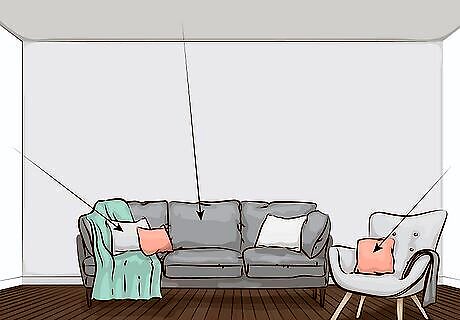
Upholstered couches, armchairs, and loveseats absorb sounds. Plush furniture is softer, so sound waves are less likely to echo off of it. If you’re just moving into a place, moving in a couch or chair will help reduce the echo. Try rearranging your furniture a few times to find the most effective arrangement for reducing echoes. Otherwise, replace some solid wood or metal furniture with a new upholstered couch or chair. Decorate your home with plush blankets and throw pillows to help absorb more of the noise and get rid of echoes in the room.
Install carpeting on the floor.
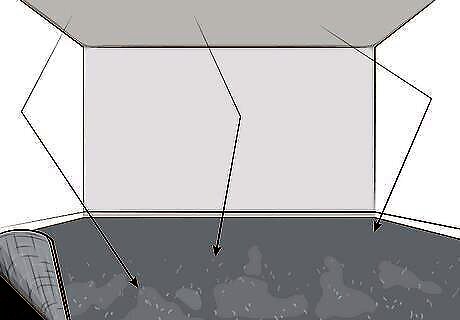
Soft carpets reduce echoes better than hard flooring. If an area rug doesn’t dampen as much noise as you want, covering your floor completely with carpet will help stop echoes even better. Because the carpet also has a cushioned pad underneath, it helps stop echoes even more. While you may install carpet on your own, it can be a little tricky if you haven’t done it before and may be best to contact a professional installation service.
Use flooring with sound-dampening underlays.

Underlays insulate your floors to block noise and echoes. Sound-dampening underlays are made from foam, fiberboard, or rubber, and they are installed as a layer beneath your finished flooring. Because putting in underlayment requires you to remove your old floors to install it, it’s best to hire a professional service to put it in for you. After putting an underlay down, you may cover it with any type of finished flooring you want.
Replace your flooring with cork.
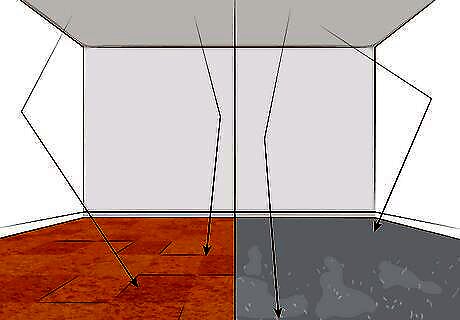
A cork layer of flooring adds sound padding to your floor. Cork is softer than traditional hard flooring, so it works better at preventing echoes. Because cork flooring can be difficult to put down correctly, have a professional install it for you. After the cork layer is down, you may install carpet or another flooring finish over it if you want.
Coat your walls with mass-loaded vinyl.
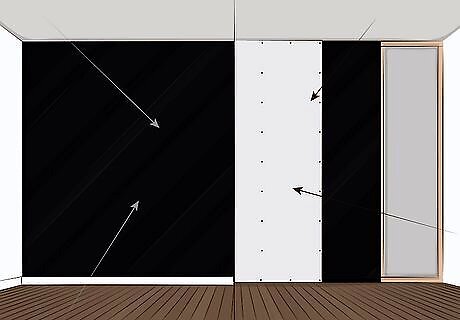
Mass-loaded vinyl covers the wall or under drywall to absorb sounds. Mass-loaded vinyl is used in recording studios and other large buildings and is one of the best soundproofing products to use. If you don’t mind the black, shiny finish of the vinyl on your walls, you can hang it right on the surface. Otherwise, install drywall over the vinyl for a cleaner finish. If you don’t feel confident putting mass-loaded vinyl on your walls, then contact a professional installation service to do it for you.
Install insulation inside your walls.
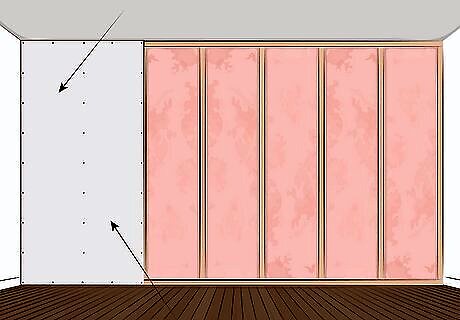
Insulation fills gaps in your walls to muffle noises. Wall insulation usually comes in large foam rolls or smaller spray foam, and it sits behind your drywall. Insulation absorbs sounds instead of letting them echo inside your wall, so it works to prevent echoes in large spaces. Because it’s difficult to install insulation without removing the drywall first, it’s usually best to do it if you’re doing a larger renovation. Otherwise, contact a professional service for installation. Insulation also helps regulate the temperature inside your home to help reduce energy bills and make you feel more comfortable.
















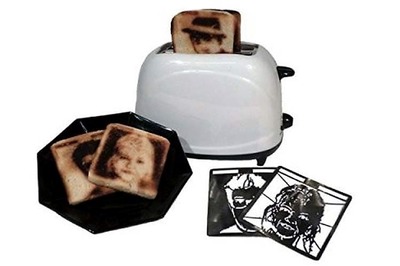



Comments
0 comment